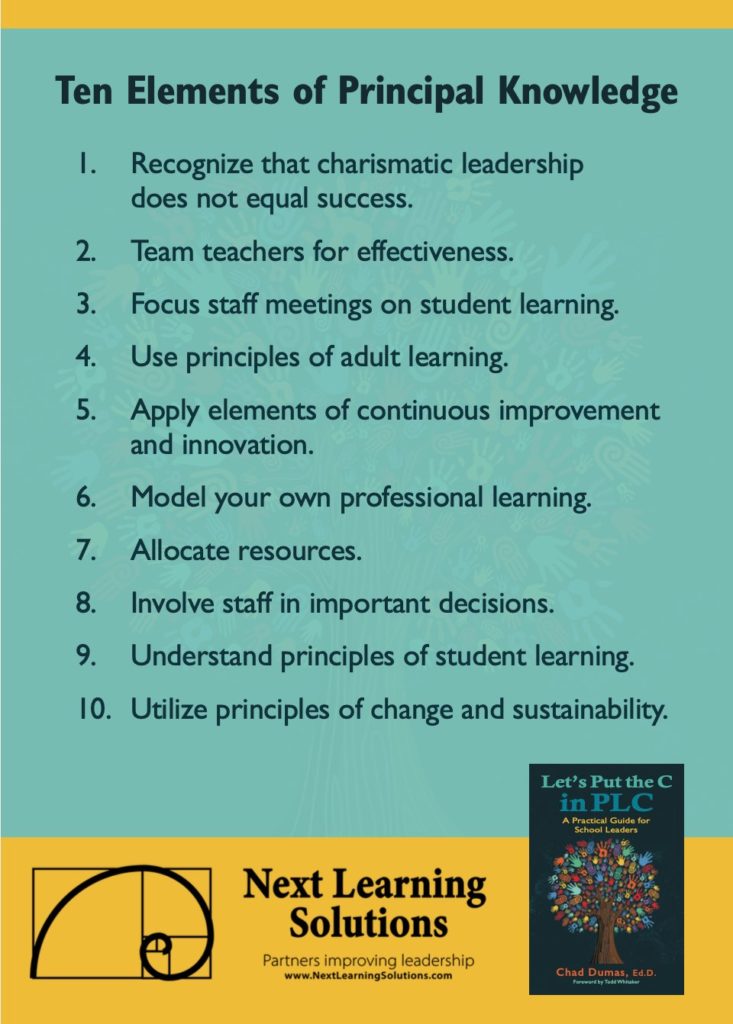Little by Little. Day by Day.
March 19, 2021
There’s a saying that my Persian Bahá’í friends share with me:
Kam kam, rooz beh rooz.
It literally means “little by little, day by day.” And it says a lot about life, relationships, and our work in schools.
The fifth element of what school leaders need to know in order to create a collaborative workplace environment is just this: continuous improvement.
Little by little. Day by day.
Yet, as simple as this sounds, there are some key aspects to this improvement that not only does research show is effective, but that practical experience bears out. Let’s take a look at just a few key ideas that are easier said than done: Focus, Talk, Culture.
Focus
It can be tempting to have many goals. One for behavior. A couple for academics. A few for social emotional learning. Another for communication. Don’t forget facilities. And maybe some for a few other areas that we think are important.
I worked with a district recently that had six priorities. Count ‘em: Six!
Forget about that!
If everything is important, then nothing is important. And if you try to do too much, you’ll end up doing nothing. Guess how much improvement has happened in that district with six goals?
You got it: Nothing measurable, and therefore nothing celebration-worthy.
Focus on a small number of goals for improvement efforts. It’s not that the other things aren’t important–they’re usually critical. Many times they are the means to the end.
For example, solid classroom management and positive school wide behavior are foundational to quality learning environments. These are the means to improving student learning, not the goal of improvement efforts.
The end goal of improvement is always student learning, so student learning must be the goal–whether in literacy, numeracy, problem-solving, or others.
For resources, stories, ideas, and tips, check out Chapter 5 in Let’s Put the C in PLC.
“How many goals should we have, then?” you may ask? One to three. Though one or two is better.
With one really good goal, the likelihood of improvement goes up. For each subsequent goal, you can count on the chances of reaching that goal decreasing by half or more.
And, of course, choosing that goal (or goals) means using our data (or evidence). And continuing to collect, analyze, and use data to guide and demonstrate our work.
Talk
As humans, we talk. It’s pretty natural, actually, and quite remarkable all that goes into being able to communicate our thoughts and feelings through language.
So what do we talk about in our schools? Do we talk about instruction? Or do we talk about other stuff?
While the other stuff can be therapeutic, it won’t improve practice. And continuous improvement is about improving our practice.
Not only does our talk need to be about instruction, but to get results, it needs to involve recognition and celebration for excellent practices and results.
While seemingly simple, the act of talking about instruction can go a long way in improving practice. Little by little. Day by day.
Culture
As a number of leadership experts have said in different forms, “Culture eats strategy for breakfast, lunch, and dinner.”
While this is a nice saying that brings out a few chuckles, what does it mean? What are important aspects of culture that contribute to continuous improvement?
First is high expectations. People will rise or fall to whatever expectations are held for them. So create an environment where high expectations are the norm for everyone.
Second, create an environment where risk-taking is encouraged, and through this risk-taking you will get a climate of inventiveness and innovativeness–in addition to reducing added job stress–as people find renewed joy and energy from their work.
Build capacity. Ask questions. Limit directives. Inquire. Eliminate blame and shame. “Protect” staff from the angry mobs when things go wrong.
These are just some of the actions leaders take to create a risk-taking environment.
And third, use groups (see my post A Group Doth Not a Team Make for more details) as the main unit of improvement. For it is through small groups of staff, working together interdependently, that the biggest improvements will come.
And it is the sum of the small group improvements, when focused as a school on the limited number of goals, that will lead to long-lasting results. And when staff see real improvement it improves the culture even when we are asked to do better every day.
An Impossible Task?
The challenges before us are immense. Improving student learning was a herculean task prior to the pandemic and the resultant rise in awareness of inequities and other challenges.
But we cannot panic. Improvement happens little by little, day by day.
Kam kam, rooz beh rooz. (And to my Persian and Bahá’í friends throughout the world, Happy Naw-Ruz (literally, New Year) on March 20th–the first day of Spring in the northern hemisphere!!)
If you want a catchy song stuck in your head for days upon days, check out
Questions for Reflection
- Which of these aspects of continuous improvement might be most helpful to you and your organization?
- How can I (and/or others) help with your desire to ensure continuous improvement?
Do you have a story you’d like to share?
Comment below
(or email [email protected])
Know of someone who would appreciate this post? Share it with them!



